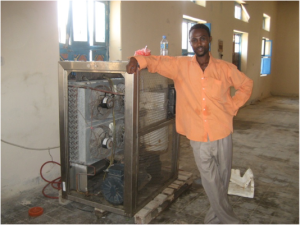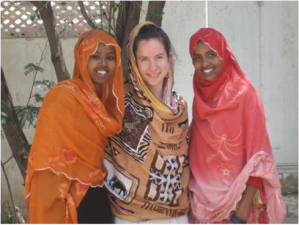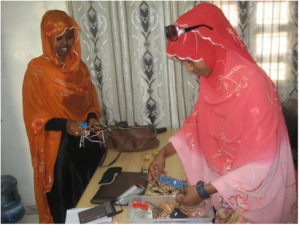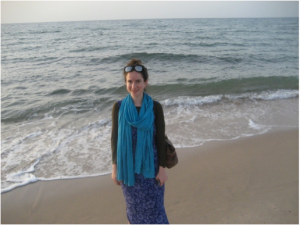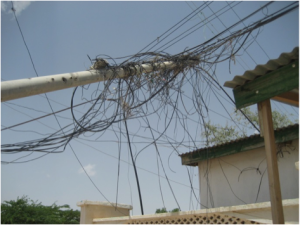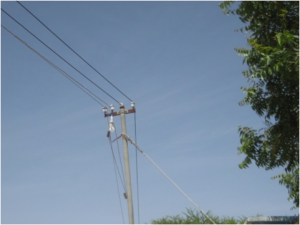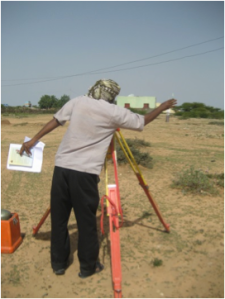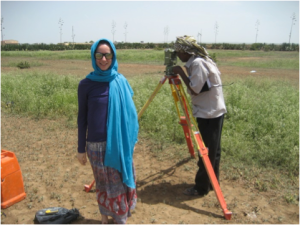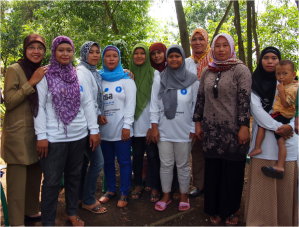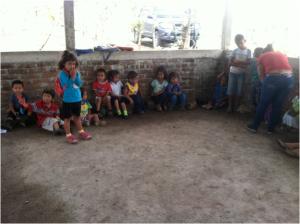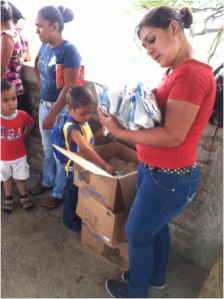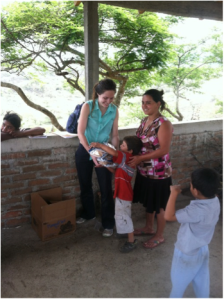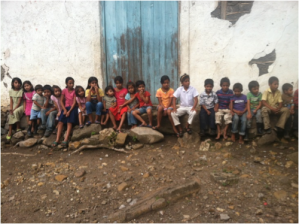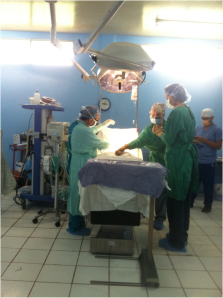Alex Zorniger
Update #1
The time on the plane is slowly ticking by, but at least it gives me an opportunity to mentally prepare myself for the journey ahead. Through all of the different ideas running through my head, one thread remains constant. We have poured billions of dollars into international aid with very little to show for it. Many of our conventional strategies have been ineffective as long-term answers to some of the world’s most pressing problems. However, recently there has been a wave of creativity and innovative solutions to hit the developmental sector and I believe many of these represent solutions truly that have the potential to make a difference. Social entrepreneurship is providing new opportunities and mechanisms to affect problems deeply seated in cultural sensitivities. As outsiders, there is no way to understand the culture as well as the native populations does. I once read about an organization that worked on latrines in Ghana. They built these beautiful toilets, with fantastic intentions only to find upon their return the following year that no one was using them. After one simple question, they realized that they had dug these latrines on top of an ancient burial ground for the village. It’s these types of problems that well-intentioned foreigners have trouble foreseeing and the impetus and value I see in my internship with Social Entrepreneurship Corps (SEC). Their goal is to facilitate local entrepreneurial opportunities for products with a social, environmental or health benefit. In Guatemala, where I will be spending my internship, and in most developing countries, the markets for products like these are underdeveloped. Products like eye glasses, cook stoves, solar heaters, all have a vital purpose in these areas, but without an established market it can be extremely difficult for local entrepreneurs to remain in business. SEC provides the necessary support to shelter these burgeoning markets, including mechanisms to reduce the risk of the local entrepreneur and support the production and distribution of the product. The Guatemalans understand better than any of us what they need to improve their lives and SEC is simply facilitating the process for them to provide it for themselves.
If a strategy has the ability to pull one person out of poverty in a sustainable manner, the only thing stopping it from being worthy of implementation is scalability. You could read everyday about a different approach to solve a development problem that has been astoundingly successful. However, year after year we find the same problems repeating themselves. We aren’t making any progress on malnutrition, people all over the world don’t have access to clean water, economic opportunity in many parts of the world are seriously lacking, etc. Where is the disconnect? I truly believe the answer resides in scalability. While the importance changing the life of one individual should never be underestimated, if we ever want to make a marked change on these problems, our solutions must be able to expand beyond one person, one family, or one community. Our programs must have the ability to evolve, grow and reproduce just like a living organism. With SEC in Guatemala I’m looking for insight into what characteristics can make that happen.
Update #2
I’m going to be honest. Going down to Guatemala, I really had no idea what exactly I was doing. Social Entrepreneur Corps (The organization I interned) was pretty poor at pre-trip communication to say the least. After my month long journey in Guatemala, I can proudly say this portion of their program is by far their weakest link. Sitting on the plane right now I feel as though I was able to learn and grow as a person and a social entrepreneur as much or more than in many of my semester long courses. So, what did I do?
Social Entrepreneur Corps is a support network for local entrepreneurial endeavors all over the world. In Guatemala, SEC’s flagship program, they provide support to Soluciones Communitarias. Soluciones Communitarias is a local organization that employs local entrepreneurs to deliver products with a social benefit to Guatemalans all over the country. They do this through what they call the “microconsignment model.” Sound familiar? Probably not. That’s because they developed the model. It’s founded upon the simple belief that the people of the developing world have the power to purchase. And this makes all the difference.
The microconsignment model is not an innovative concept. It was developed many years ago under the title of “consignment” in the United States The premise is that a central organization creates the business model and acquires the products in order to “consign” them to sales people. If salespeople sell the item they get a cut of the profits. If not, they can return the products back to the central organization at no charge. The model opens the door wide open for entrepreneurs by taking the risk out of starting your own venture. If things don’t work, the entrepreneur can return the products, rather than taking a financial loss on the entire unsold inventory. The microconsignment is this same model, only applied to developing world populations.
And this model can be applied to so many of the problems that face us. Around a billion people don’t have access to clean water. Our mainstream solution to this problem has been to give these people water-purifying systems free of charge. The thinking behind this is that many of these people can barely afford food or clothing, how would they be able to pay for a water purifying system? Because of this perspective, the bottom billion have been neglected. This mindset is where we are making our mistake. Look at Coca-Cola. Many of the people in developing countries make less than a dollar a day, but you’ll find them drinking a coke. These people are consumers. And what happens when you treat them like consumers, rather than helpless people? Well, that’s where things get interesting.
The key benefit of treating the bottom billion like consumers is that it puts everyone on the same level. How many stories are their of aid projects that were well conceived, but undermined by a lack of cultural understanding. We give them beautiful solutions, free of charge, and then we realize a year later that they’re not having any impact. That’s because people will take ANYTHING if it’s free. They may never use it, but if it’s free, why not? But, when you treat people like consumers, they’ll tell you if your product sucks. They’re not going to buy something that doesn’t work for them. It creates an accountability mechanism to the business or organization that forces them to create a solution that will actually fix the problem or the organization won’t survive. This idea is one of the key reasons for the ineffectiveness of our current aid. The accountability mechanisms for development organizations are to their donors not to the people they’re actually serving. If we can structure organizations to begin being accountable to their targets I think we would see a great increase in the effectiveness of our aid. Social Entrepreneur Corps may not be the biggest development organization, but before you can affect the masses you must have a model that can consistently change one person’s life. Social Entrepreneur Corps is able to effectively change individuals’ lives. The next step? Scaling.
Claudia Schwartz
Update #1 Energy and Entrepreneurship in Somaliland
In Somaliland, the autonomous region in the northwest of Somalia, energy prices are some of the highest in the world, at $1 to $1.25 per kilowatt hour. Almost 99% of energy usage in Somaliland is fueled by petroleum, all of which must be imported, usually from the nearby Persian Gulf, and is used to fuel expensive diesel generators. Households spend on average over 35% of their incomes on energy, and energy costs are the number one reason cited for businesses failing. “Businesses failing” might not sound like such a rare occurrence to the general public, for whom Somaliland/Somalia may call to mind a conflict-ridden wasteland which is failing in general and where the business environment is the least of its problems. Yet the reality in Somaliland is quite different from this image; Somaliland actually has a stable state and a thriving business sector, in large part fueled by members of the returned diaspora. Providing access to affordable, sustainable sources of energy will be a major boost to the future economic development of Somaliland. I came to Somaliland to work with a company that is trying to do just that – Qorax Energy, a joint Somali-American start-up, which is working to develop solar power projects to bring alternative sources of energy to Somaliland households and businesses.
Providing affordable energy in Somaliland is inherently a social enterprise; it promises economic returns but is also providing an essential service that will benefit businesses, households and the wider community. The strength of the business sector in Somaliland is astonishing, but all businesses struggle with energy costs. For example, one man I met is in the process of starting an ice-making company in Berbera, Somaliland’s port in the north on the Gulf of Aden.
Ice is a high-demand commodity, especially given the port’s nascent fishing industry, but one which requires large inputs of energy. The owner estimates that if he runs the machine for three hours he can make one ton of ice, which will sell for $200.[1] However, running the machine costs approximately $1/kilowatt hour, so just running the machine for a normal workday will cost him $80 per day, which will significantly eat into his profits.
The ice factory owner next to one of his ice making machines.
Qorax is working to assist businesspeople such as this by providing access to clean, distributed renewable energy generation projects. Qorax, which means “sun” in Somali, is focused on solar power, for which Somaliland is ideal, based on its location near the equator and annual irradiation patterns. One issue that solar energy developers in other developing countries have faced is the problem of what happens if something in the installation breaks down – if the solar developer has already left, and there is no local capacity to repair the malfunction, the installation will become useless. Qorax is addressing this problem by also developing a solar technician training workshop in cooperation with a local technical university. Currently in its pilot phase, two Somali engineering students in their final semesters are being training in applied engineering skills specific to solar PV installations. In the next phase Qorax plans to provide international solar technician certifications.
The student trainees demonstrating their skills; me with the student trainees
I came to Somaliland to support Qorax on the ground for a brief few weeks this summer, though I’ve been supporting them remotely for the past semester and will continue to do so throughout the summer. Currently, I’m working on helping to find potential partners, investors and suppliers for Qorax in both the local and international markets, including talking to companies who might otherwise not have considered Somaliland a viable business opportunity.
Right now I’m writing this from Hargeisa, the capital of Somaliland, where I’m spending my first “weekend” (the weekend is just Friday in Somaliland) drinking tea, attempting to communicate with the housekeeper Raxma (the “x” is silent of course!), and providing this update. In closing, here’s another highlight of the trip so far – my first trip to the Somaliland beach! This is Berbera, on the Gulf of Aden – who knows, maybe soon to be the best kept secret in beach getaways?
[1] This is not the local equivalent of $200, it is actually 200 American dollars – almost anything can be paid for in USD in Somaliland, giving it a slightly “Wild West” feel, although it does have its own currency, the Somaliland shilling.
Update #2” Powering Somaliland
As mentioned in my previous blog entry, I am currently in Hargeisa, Somaliland working on a start-up renewable energy company, Qorax Energy. Qorax is working to bring affordable solar energy to Somaliland to drive the country’s growth – allowing businesses to thrive and reducing the burden on households’ in terms of the amount of their incomes that they must spend on energy.
Currently, the energy sector in Somaliland is fragmented, to put it mildly. There is no one large energy utility company, either publicly or privately owned – each town, or neighborhood in a larger city such as Hargeisa, has its own independent power provider (IPP) which operates a diesel powered generator and may supply power to around 500 households.
This can result in some fairly confusing situations, such as this common site in Hargeisa:
Power lines in Hargeisa, capital of Somaliland.
Electrical lines are installed somewhat haphazardly by the various IPPs, each serving its own customer base. There is no centralized authority or agency strictly regulating the sector, though the Somaliland government is currently developing a new energy law and framework. On the other hand, the proliferation of IPPs can sometimes result in a situation such as this:
Power lines in Gabiley, western Somaliland.
We were told that in this town, the reason that there are four electrical lines on each electrical pole is that there are four separate power providers, each serving different sections of the town. In many other countries, certain characteristics of industries such as electricity and water – including economies of scale and barriers to entry – have tended to create situations where it is only economically efficient to have one or two producers, leading to “natural monopolies.” This has not yet occurred in Somaliland, where many small providers exist instead of one large utility. Unfortunately, this increased competition has not resulted in lower prices, mainly because all providers are highly dependent on the price of imported fuel, which gives them little flexibility. Qorax is attempting to address this problem through access to clean, renewable, affordable solar energy.
I am learning a lot about the development of solar power projects – from how they are financed, to conducting market/demand analyses, to feasibility studies. Here I am on a surveyor site visit to one potential project location:
And for another little bit of excitement – my first time driving in Somaliland! Luckily many of the cars are automatic transmission here, and everyone drives on the right side of the road, though some cars have steering wheels on the left and some have steering wheels on the right (as you can see in the picture).
Kristi Hill
Women’s Microfinance Initiative (WMI) is an organization that works to
empower rural women by providing them with the skills and the capital
necessary to become successful entrepreneurs. WMI is composed of
multiple village level loan hubs and provides services to women all
throughout Uganda, with other hubs in Kenya and Tanzania. Local women,
who oversee program operations and provide trainings to new borrowers,
run each hub.
During my fellowship this summer, I have been working together with
two other interns on a number of projects at the main office in
Buyobo, Uganda. The most sizeable project is a longitudinal study of
independent borrowers. We are hoping that the study will provide
valuable insight into the loan program’s impact on the local
community. Women in the WMI program go through stages of successively
larger loans until eventually graduating to commercial bank loans, and
independent borrowers are those women who have graduated to commercial
banks. So far, we have interviewed over forty independent borrowers
and it has been fascinating to hear their stories and perspectives on
the program. Women describe many different positive impacts of the
loan program, ranging from a decrease in domestic violence in the
community to an increase in the number of children attending school.
We are hoping to finish interviewing women in the next few weeks so
that we can begin compiling and analyzing the data from our surveys.
We have also been working to create short videos for the WMI website
that will help potential donors better understand loan program
operations, and more generally, daily life in rural Uganda. While
getting footage for this project I have had the opportunity to attend
new borrower trainings and loan repayment days, and I am looking
forward to a borrower graduation in a few weeks. Attending these
events is always exciting, and they have been some of the highlights
of my fellowship.
This past month at WMI has been an incredible experience, and I am
looking forward to the coming month, especially analyzing the survey
data and compiling it into a fact book.
Jed Silver
I’ve been back in Uganda for about 12 days now, although I can’t tell if it feels like I’ve been here for a year or only just gotten off the plane. Last Friday, Donnas and I arrived in Lira and on Saturday, our Board of Directors convened for our second meeting. We were all encouraged by the progress we’ve made so far, raising nearly $15,000 for the BASIS project and our organizational needs this year, but we were sobered by the challenges we still face turning RREADI from an idea for a project into an efficient, accountable, and professional organization. I think the toughest period for any organization, business, or group of people is the start-up phase and if we can survive this baptism by fire and learn by doing, I think we are on track to become the organization that we first dreamed of being.
The next day, Donnas and I traveled to Barongin where we held a community meeting where we gave the members who attended some updates on the work we’d be doing with the savings groups and produce marketing as part of the BASIS project. My Leb Lango was a little bit too rusty to pick exactly what people said, but people were extremely excited for the next few months and more importantly, they asked us questions and discussed amongst each other about the benefits and risks of different marketing strategies. One man, known in the villages as Mzee Amor Amor, even donated about half an acre of land for us to construct the produce bulking center that we proposed as part of the project. It was extremely reassuring to see the community eager to contribute in thought and in kind.
Emmanuel, our project volunteer, and I have been living together in the office and have spent the week training various savings groups across the village and also trying to ensure that promoting commercial marketing as part of our project will benefit and not harm food security. Although most households in the village are usually able to grow enough food to last throughout the year, the weather has been bad this season and some households are facing food shortages during this lean season. So far, we still believe that the gains from selling to better markets will give families enough of a buffer to overcome any shortage, but we need to complete our due diligence on this matter before proceeding.
In the next few weeks, we also hope to conduct a quantitative baseline survey so we can track not only the effects of our trainings on savings groups, but see how members increase their investment in agriculture and other enterprises, access more health care, and support their children’s education. I think RREADI is one of very few organizations to implement a Village Savings & Loans project directly linked to collective produce marketing and if this project succeeds, it can prove a useful innovation far beyond Barongin.
Morgan Babbs
Where I come from, I get charged for plastic bags when I shop. Now I’m in a city that’s fair to say has been completely frozen for 31 years.
No one goes to Managua and no one likes Managua. Managua is always the first chapter in travel guides on Nicaragua. After listing the 3 or so “places” to “visit” and explaining how to not get robbed and kidnapped by cabs, it tells you to get out. There are no travel blogs about Managua. Managuans who can afford it leave the city every weekend.
I asked my Canadian coworker if she liked Managua—she hesitated, as if she didn’t want to give me the truth, but gave the country its deserved credit by answering: “I like Nicaragua…”
A traveler who flocks to the beaches and surf in Nicaragua remarked “hah, Managua, that’s the ugliest city in the world!”
When one of my coworkers was talking to me about his background and living in Managua he said that he liked the city because there was tons of stuff to do. Immediately I excitedly asked him to tell me about all of the stuff, which is when he realized he was misunderstood: “Oh, no, not fun things, I mean like things to do to improve Nicaragua, lots of development work… that sort of thing”.
Managua has been stuck and helpless since the earthquake in 1972 that destroyed the entire city—since then, it has never rebuilt. At all. In fact, it’s sad that I’m even writing this sentence: all (4? 12? 10?) articles and travel guides about Managua open with that same earthquake fact, almost showing that all there is to know about the capital city of the largest and safest Latin American country is that it’s characterized by destruction.
I would think that Managua would be flocked with urban planning visionaries—it’s the perfect basket case. However, there have been no major improvements or changes in the past 30 years, except the addition of Galerias Santo Domingo, the pride and joy of Managua—a mall. In an analysis by McKinsey&Company showing global cities of the future and projected growth rates of cities, Managua doesn’t even make the chart. Nicaragua has illegally had the same president (Daniel Ortega) serve two terms. He’ll likely serve a third by just “saying so” and no one will care. There are no street names or numbers in Managua—you find destinations by mentioning to the taxi driver another restaurant that’s close to the restaurant you’re actually trying to go to or by mentioning another building that’s close to the building or house you’re actually trying to get to… and then saying how many meters or blocks north, south, east, or west the destination is. But this doesn’t even work. You then spend 3 minutes driving around the block looking for the place in the dark. The tallest building in Managua is six stories high. Starbucks, in all its corners of the cities of the developing world, hasn’t even come to Managua. Half the buses in the city say “Russia Nicaragua” (no punctuation between!) which makes ZERO sense when you try to think really hard about what this means and what the connection between Russia and Nicaragua is… until someone informs you that Russia gave Nicaragua those buses. Half of the bridges in the country say “Japan Nicaragua,” which I’ll take a guess means that Japan gave Nicaragua the bridges…
Nicaragua has two competing mobile phone carriers: Claro and Movistar. Perhaps the most illogical thing ever is that it costs more to make a call between a Movistar phone and a Claro phone than it costs to make a call from the United States to Nicaragua. Reread that sentence again if necessary. This means that many people have two phones—one for their Movistar friends and one for their Claro friends. Some people even have three phones—the third for Internet. What?
I’ve only been here for a week and have duly noted the illogicalities of the city, but I look forward to finding the tasteful, quirky aspects of Managua. It’s an odd task to try to get to know a city that doesn’t have much to show for. I am also very happy to have added to the Internet’s plethora (kidding) of blog posts on Managua—hopefully this will help someone who was in the same place I was a month ago: desperate for word on a city that has nothing to say.
Sonja Kytomaa – Tufts Timmy
Along with two other students from Tufts, Victoria and Alejandra, I spent a majority of May and the beginning of June in Quetzaltenango, Guatemala. Nearly every aspect of our trip involved water in one way or another, making for a very wet three weeks. First off, we were there at the beginning of rainy season, which meant rain showers every afternoon, without fail. Another, perhaps more important, way in which water became a defining feature of our trip was as the focus of our project.
The goal of our project was to increase access to clean, safe, water in the rural communities of Guatemala. More specifically, our project consisted of two parts. In the first part we interviewed 11 women from La Victoria (a small town about an hour away from Quetzaltenango), about their knowledge, attitudes and practices surrounding water, sanitation and hygiene. We also aimed to get a sense of what the women wanted in terms of filters and clean water based on what they would use it for and their priorities, rather than simply telling them what to do.
The second part consisted of teaching students in an afterschool program run by Pop Wuj, the Spanish school we took classes with, about the solar disinfection method, also known as SODIS. SODIS is a simple way of killing nearly all of the bacteria in untreated water, helping prevent diarrheal disease and parasites. It essentially consists of leaving a PET water bottle (in other words, a majority of water bottles sold in stores), filled with untreated water out in the sun for 6 hours, or two days if the sky is mostly cloudy. Multiple studies have proven its effectiveness, however we still wanted to confirm that it would work in this particular setting. Alejandra packed with her a set of water testing kits, so we conducted an experiment to see how effective SODIS was as well as what the best way of cleaning the water bottles would be.
The results from both parts were promising, and very interesting. From the interviews, we got the general impression that the women had a solid understanding of good practices concerning sanitation, hygiene and the importance of clean water. However, they continue to face multiple barriers. The barriers included cost as well as the size of filters offered to them. That led us to believe that implementing the SODIS method in La Victoria as a supplemental water source could be an effective next step.
Unfortunately, with the limited time we had in Guatemala, we were unable to follow through with teaching the children in the afterschool program about SODIS personally or begin implementing it in La Victoria. However, we were able to talk to the coordinator of the afterschool program, and drew up a poster explaining the process. Even though it is far from ideal to be unable to be more directly involved with every aspect of the project, I think that this might have been a blessing in disguise. Hearing these lessons from the coordinator, who the students see nearly every day and have known for much longer than us might have worked in our favor, making them more open to learning and adopting this new method. This situation speaks to an aspect of community health that I love. It is not an individual field, but out of necessity requires collaboration and working with others in order to accomplish our goals.
Even though our time in Guatemala showed us that there is still much to do, I returned to Boston with a sense of accomplishment knowing that it was all a step in the right direction and will help shape our future efforts when we return in the (hopefully) near future!
Juan Clar
India is not new to me. I had previously lived in New Delhi, the country’s capital in the North, but this time, I headed down South to Chennai. When I arrived in Chennai to start my internship and personal projects, I felt like I was in a different country. Tamil language and culture were poles apart from the Hindi language and North Indian culture I was used to. Food was spicier and even more vegetarian, something I had previously thought as impossible. In the midst of all these differences, I felt good because I knew that a summer in Chennai would be as unique as a year in Delhi.
I realized I made the right summer plans on the day I began my internship at the U.S. Consulate in Chennai. From day one, I was trained about all of the Consulate’s functions and briefed about my area of expertise, which is the Indian economy. As an intern in the commercial section of the Consulate, I help American companies do business in India, and we try to get Indian companies to invest in the U.S. A significant portion of the business people I have met are social entrepreneurs or players in the green technology sector. All of them have been valuable resources for understanding the market for social and green entrepreneurship in South India.
However, most of my professional interactions are confidential, which means that any research I intend to publish has to come from outside sources. Therefore, in the upcoming months, I am arranging some field work, individual research and other off the record meetings to increase my understanding of social entrepreneurship in South India.
Leah Meadows
Working to Give Female Farmers in Indonesia Access to Agricultural Information and Financial Services
Last week, I interviewed female rice farmers in Karawang, a rural district in West Java, Indonesia, to determine their access to agricultural information, financial services, and cell phone technology.
Despite their vital role in agricultural production, women in Indonesia are systematically excluded from agricultural information. During rice production, women plant seeds, weed tall grasses, manage pests, use manual tools, and sort the rice post-harvest.
Formal channels of agriculture communication bypass women, however, because only men who own land are invited to village meetings about agriculture, and often times agricultural extension officers neglect female farmer groups in order to focus their efforts on male farmer groups.
During my interviews, I met Nayah, an enterprising female farmer who supplements her income by washing motorcycles. She wants to form a cooperative of female farmers to sell ground ginger in the markets, but needs the capital, skills, tools, and distribution networks to do so.
Nayah, like all the women in her community, does not have a bank account, so it is difficult for her to get the start-up capital for her business.
This is why I am helping rural female farmers become entrepreneurs through my summer internship with MercyCorps’ Agri-Fin mobile project. I am working to provide rural women in Indonesia with access to technical and market information along with financial services through mobile technology.
Providing access to rural advisory and financial services through mobile phones – a highly promising medium to reach millions of women in remote areas – has a high potential to improve smallholders’ productivity and stabilize their incomes.
Elayne Stecher — BUILD Nicaragua
Since late May I have been working with my partner organization, La Asociación de Voluntarios para el Desarrollo Comunitario (AVODEC), on a number of projects. AVODEC was founded by native Jinotegan Victorino Centeno to help his community after Hurricane Mitch in 1998 and has since expanded, although all of their projects are located within the municipality of Jinotega.
I am involved in three main projects. The first is infant nutrition in a region called “Los Lomos”. This project involves the distribution of MannaPack Rice (from Feed My Starving Children, a U.S. organization) to mothers with young children. The packets of rice and soy-protein are packed with vitamins to help brain development and are specifically for children aged 6 months – 6 years. AVODEC transports the food from a local church, where it is stored, to the target community and helps to organize the mothers into a rotation (each day, a different mother will cook the rice for all the children under six). Once a week, a social worker named Johana and I go to visit Los Lomos and ensure that the children are being fed, all the mothers are participating in the rotation, and to replenish the food supplies.
I am helping Johana to implement the same system in a larger community called “Los Chaguites”. Over 50 children under six and their mothers will participate in the nutrition program there.
My second project is assisting with the medical brigades that an organization called Esperanza organizes and AVODEC facilitates. I had the opportunity to work with the first brigade last week (June 9 -15) and helped translate during 31 operations and the corresponding consults with patients and their parents (I was one of three translators).
My last project is translating various documents from Spanish into English or English to Spanish. These documents are usually related to project development (proposals, funding, timelines, etc) and I’ve already learned quite a bit about AVODEC’s upcoming potable water project and plan to reforest parts of Jinotega with Cacao trees.
Tom (another BUILD: Nicaragua member) and I also are invited to participate in capacity-building workshops where we present information or documents that we discussed in our Quidnunc this past spring and try to bring in resources that will improve AVODEC’s DM&E.
Here are some photos!
From Los Lomos:
The children under six have “school” in a pavilion that AVODEC built last year, complete with access to latrines that AVODEC also provided.
The teacher helps organize the packets with some help.
One little girl passes the packets to her mother.
Here I am, passing out the last of the MannaPacks.
From Los Chaguites:
Some of the children gather outside of the church as Johana, Victorino and I explain the nutrition program.
With the Medical Brigade:
Dr. Custer and Dr. O’Connor operate on an umbilical hernia.
Dr. Custer (right) and Nicaraguan Dr. Montes (left) operate on a young boy.
American Dr. Shnell helps the Nicaraguan doctors on the left while Dr. Custer, Dr. O’Connor and Dr. Wood Bond operate on the right.
From left to right:
Back row: Nicaraguan nurse, Dr. Custer, Sandra (Nicaraguan head nurse), Dr. Wood Bond, Dr. Shnell, Dr. O’Connor
Front row: Me (Elayne Stecher), Luis Enrique (AVODEC, my host dad!), Louisa (Nicaraguan nurse), Yani (anesthesiologist with the brigade), Yessi (AVODEC), and Nicaraguan Dr. Julio.


